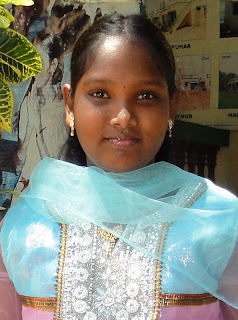 |
| Confident rural girl concentrate on Education |
The leaders of our freedom movement realized the importance of girls’ education and had put it as a prime agenda for national development. Social and cultural barriers to education of women and lack of access to organized schooling had to be addressed immediately. Growth in access to schooling has been matched by a steady increase in enrollment with the most dramatic upswing in girls’ participation levels. Providing access and enrollment to schooling facilities are only a part of the story. Our aim is also to help the students to continue their studies. Although the phenomenon of drop outs continue to be a serious problem in India’s education scenario, the dropout rates in elementary education have been on the decline, more sharply so for girls. The trends in transition rates from Primary to Upper Primary are also positive. The reason so many experts believe educating girls is the most important investment in the world is how much they give back to their families. What Works in Girls' Education, is simultaneously disturbing and encouraging. It's disheartening to think of how far we have to go to get all kids into school—one of the United Nations Millennium Development Goals launched in 2000 to accelerate progress on fighting poverty, disease and other social ills. But it's also hopeful: at least we can focus on a specific solution. When girls go to school, they marry later and have fewer, healthier children. When girls get educated, they are three times less likely to contract HIV/AIDS. The practical effect is that poor families send their two oldest, healthiest boys to school with the hope that they will support their parents in their old age. This often deprives girls—the ones actually much more likely to help their families—of the chance to go to school. The waste of human capital is incalculable. Consider that only 5 percent of children with disabilities get any education at all in the developing world. Donor nations and NGOs are increasingly reaching a consensus that global education, especially for girls, is the keystone to the arch of development. The Millennium Development Goals of universal primary education with gender equity are among the hottest topics. The world's most ambitious and pathetic goals—ambitious because so many countries are not on track to reach them; pathetic because of the idea that five or six years of primary education will suffice when there's no real demonstrable advantage without eight. The challenge extends beyond funding to changing the culture of the developing world. Parents must be convinced that if their daughters go to school, they will learn enough math to help them in the market. Mothers must learn that while sending their daughters to school might mean one fewer pair of hands to help around the house, their families will be better off in the long run. Drawing upon the Constitution and other policy statements articulated in the years that followed, the Government of India in partnership with State Governments has designed different strategies, interventions, schemes and programmes with specific objectives that impinge on girls’ education.-Govin

No comments:
Post a Comment
Note: Only a member of this blog may post a comment.